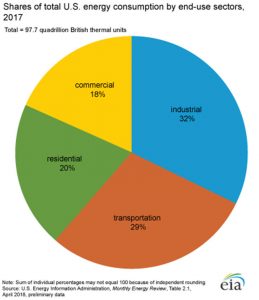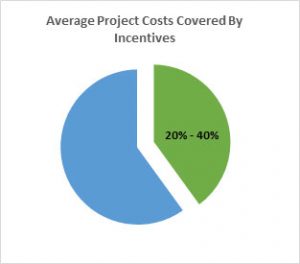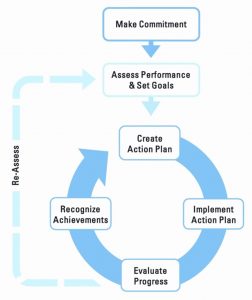According to the Energy Information Administration (EIA), the Commercial and Industrial (C&I) industry is the nation’s largest consumer of energy, accounting for more than 50% of all energy consumed in the US. Because of this, plant and facility managers often view energy as an effective way to reduce costs, but frequently struggle to get their projects approved due to the following:
- A lack of incentives to help cover project costs.
- Proposed financial returns do not meet corporate’s objectives.
- A lack of funding from corporate.
Unfortunately, this is a real lost opportunity as energy efficiency projects can often coincide and help pay for other projects that further your company’s core initiatives.
At SEMCO, our entire process is built around helping plant and facility operators overcome these challenges by developing energy-saving projects that meet your team’s financial objectives, secure little know incentives to cover 20% – 40% of the initial project costs and offer low-interest finance solutions that create cash flow positive results from day one. Below is our process in helping companies achieve their desired outcomes.
Financing and Incentive Opportunities
While many plant and facility managers are familiar with the concept of utility rebates (which may or may not be offered by their own utility), most are not aware of the multiple tax credit, tax deduction, grants and state financing incentives that are also readily available to help fund their projects.
At SEMCO, it’s our mission to help you take advantage of every possible incentive to help reduce your initial upfront cost, shorten ROI, and create immediate positive cash flows. Which is why during our initial conversations, we will typically request the below information to determine the unique mix of incentives that will apply to your projects:
- Year facility was built or last purchased.
- Business type and location of the facility (state, county, rural or non-rural).
- Total square footage of the facility.
- How your company files taxes.
- The total number of employees in the company.
Once we have a feel for the incentives your company will qualify for, we will then go to work developing projects that will maximize the value of these incentives. The goal here is to develop projects where monthly energy and maintenance savings can exceed a low-interest monthly finance payment.
The Energy Efficiency Project Development Process
The first step in the evaluation process is for our team to learn about your unique operating environment, potential projects you have already identified as opportunities and any goals your company would have in implementing an energy efficiency project.
From there, 12 months of utility bills would be collected and analyzed to establish an energy baseline and determine your rate. In some cases, we’ll also be able to identify ways to reduce costs just by a utility billing audit.
Once the energy baseline is developed, SEMCO will send the appropriate team to your facility to conduct a preliminary audit of the premises. Typical projects may include, but are not limited to:
- Lighting
- HVAC
- Compressed Air
- Motors
- Capacitors
- Solar, etc.
Once the preliminary audit is complete, we’ll begin working on a proposal that will include all applicable incentives and low interest financing options for the identified projects.
Implementing Your Project
All projects will be presented as turn-key. Once the proposed contract is accepted, SEMCO will go to work securing your incentives and installing the projects on time and completely around your operating schedule.
If your company is interested in evaluating energy cost reduction projects, please reach out to us today to schedule your free consultation. All energy savings projects can be measured and verified and below are typical saving opportunities by the system. Contact us today to schedule your free energy audit!

References: https://www.eia.gov/energyexplained/index.php?page=us_energy_use




